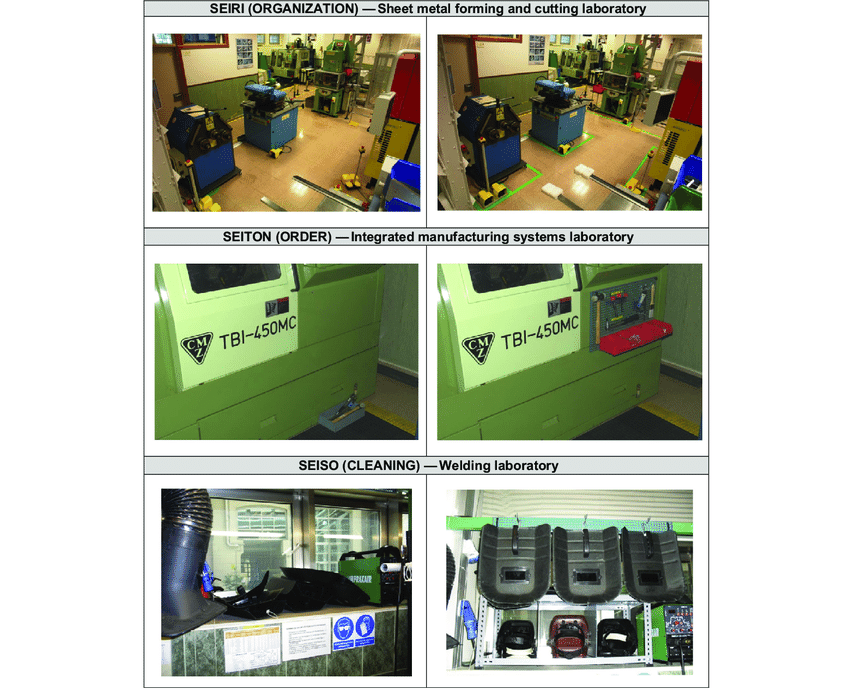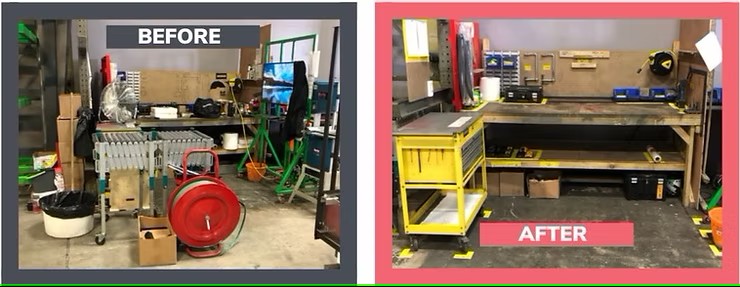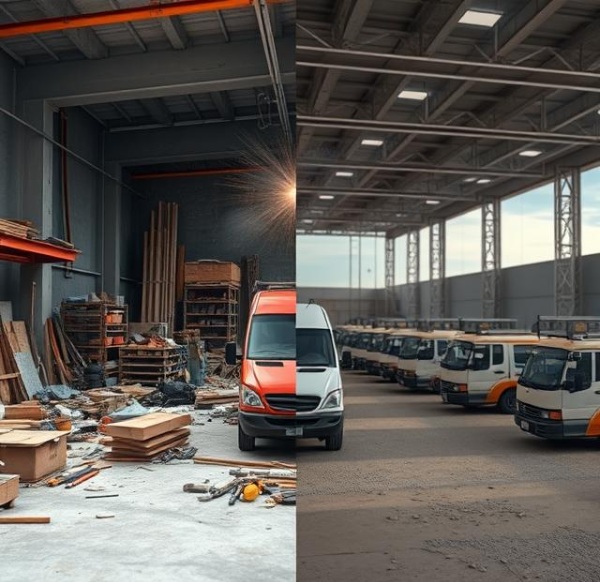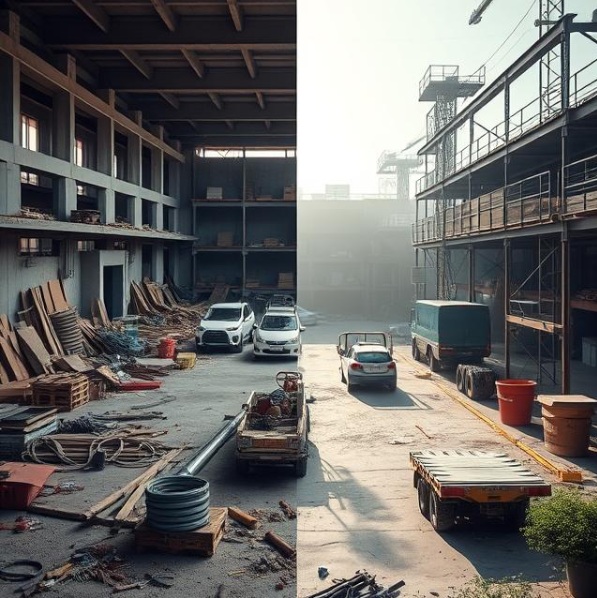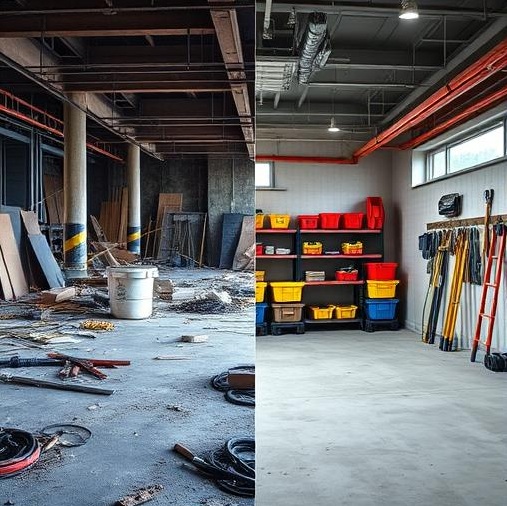A guide to the 5S Methodology
Contents |
[edit] A guide to the 5S Methodology
Those who work with tools know how important is to maintain a certain order to be able to preserve each element in the best possible conditions; find it when needed so saving time and maintain efficiency; allow others to use it.
Those who sit at a desk may be aware of the “clean desk policy” that, in recent years, has become a standard in many organisations. Employees are requested to leave their desk in order, avoiding documents spread on the working space, piles of unbalanced folders, pens and pencils everywhere.
The basic idea is that clutter causes inefficiencies due, as an example, to the confusion generated by the disorganised distribution of the items on the space.
“Order”, “preserve”, “saving time”, “efficiency”, “clean”, “inefficiencies”. “confusion”, “disorganised”: all terms that are somehow connected to the 5S methodology.
Developed in Japan by Hiroyuki Hirano, a Toyota engineer, 5S is one of the fundamental elements of Lean Manufacturing and, of course, Lean Six Sigma. The name comes from the initials of five Japanese words: Seiri, Seiton, Seiso, Seiketsu, Shitsuke. If you are unfamiliar with the language, no worries; the English version has chosen five terms starting with “s” as well: Sort, Set in Order, Shine Standardise, Sustain.
5S offers a simple yet powerful solution and, when implemented effectively, it creates a clean, efficient, and safe work environment, boosting productivity and fostering a culture of continuous improvement.
[edit] The 5S Pillars
Hirano identified 5 elements of the 5S approach:
- Sort (Seiri): The first step is to declutter. Identify essential and non-essential items. Discard anything that's broken, unused, or outdated. Label unclear items for further evaluation and designate a holding area for items slated for removal.
Set in Order (Seiton): Organise the remaining items for easy access and retrieval. Clearly label shelves, drawers, and equipment. Use visual cues like color-coding or floor markings to designate specific locations. “Set in order” is more common in the manufacturing environment. In other industries this point is also referred to as “simplify”: everything that complicate the work environment can contribute to create waste of time, space, resources, et al.
Shine (Seiso): Maintain a clean and hygienic workspace. Establish cleaning routines and assign responsibilities. Regular cleaning fosters a sense of ownership – supporting the achievement of better results - and prevents dirt and debris from accumulating.
Standardise (Seiketsu): Everyone needs to know why something has been done in a certain way. Develop and document best practices for maintaining the organised state achieved in the previous steps. Create visual aids like checklists and flowcharts to ensure consistency.
Sustain (Shitsuke): The final pillar emphasises continuous improvement. The word used by Hirano is “discipline”. Integrate 5S into daily routines and conduct regular audits to identify areas for improvement. Encourage teamwork and hold employees accountable for upholding the established standards.
As continuous improvement requires, critical to the success is the participation of the management and keeping the interest alive on the methodology to ensure that
[edit] Benefits of 5S
- No drama: compared to other tools, 5S is easy to understand and can be implemented easily.
- Increased Productivity: less defects improve makes reliable deliveries.
- Enhanced Safety: a clean and organised workspace minimises tripping hazards and promotes better awareness of surroundings.
- Better maintenance: equipment conditions should be evaluated periodically, improving the availability ratio (tools are available when needed).
- Reduced lead times: reduced clutter and improved organisation save time and effort, otherwise spent searching for tools and materials.
- Improved Quality: standardised processes and clear labelling lead to fewer errors and higher quality output.
- Boosted Morale: a clean and organised work environment fosters a sense of pride and ownership among employees.
- Reduced Waste: 5S promotes a culture of efficiency and reduces waste, by eliminating unnecessary items.
- Continuous Improvement: using 5S offers the opportunity to verify new way of organising the resources, eventually leading to a virtuous circle.
[edit] Getting Started with 5S
Implementing 5S doesn't require a significant investment and does not need expensive experts to guide you through. Start by gathering your team and clearly defining goals. A scalable approach is advisable: begin with a small, manageable area and work your way to apply the 5S stages throughout your company. Celebrate successes of your team and continuously refine your approach.
The 5S methodology offers a practical and effective framework for creating a well-organised and productive work environment. By adopting these principles, you can empower your team to work smarter, not harder.
[edit] Beyond the Workplace
Like other tools – e.g. 5Whys - 5S was born and is primarily used in manufacturing and industrial settings. However, its principles can be applied to any work environment, including construction sites, and even to the personal life. By decluttering your physical and digital space, you can free up mental space and enhance overall well-being.
[edit] Final considerations
The interesting part of the 5S methodology is that you might already be using it. Keeping your stuff in order has always been a wise behaviour. 5S methodology makes wiseness a step-by-step approach.
The pillars are as easy to remember and to be used as they are powerful. Their application may require specific knowledge of the work processes, but the majority of the situations in the construction industry can be improved in a straightforward way without involving expensive consultants or highly trained employees.
Eventually, the implementation may be enhanced by allowing everyone to contribute. As an example, a competition may be organised between teams managing similar activities: each team might offer innovative ways to address 5S expectations.
All that is required is to start; improvements will come as a natural effect.
[edit] Examples of the 5S methodology
Figure 1 – Comparison between before and after 5S methodology application (Researchgate)
Figure 2 - Before and after 5S (Sempai)
Figure 3 - Before and after 5S (Sempai)
The following images are generated via artificial intelligence and show the work environment before and after the implementation of the 5S methodology.
Figure 4 – AI generated example
Figure 5 – AI generated example
Figure 6 – AI generated example
Figure 7 – AI generated example
[edit] Reference
Hirano, H (1995). 5 pillars of the visual workplace – the sourcebook for 5S implementation. Productivity Press, New York. ISBN: 1-56327-047-1
5 Pillars of the Visual Workplace - Hiroyuki Hirano - Google Books
Researchgate – Figure 1 “Comparison between before and after 5S methodology application “ Uploaded by Mariano Jiménez Calzado https://www.researchgate.net/figure/Comparison-between-before-and-after-5S-methodology-application_fig5_276267985
Sempai.co.uk. Figure 2 & 3 “Before and after 5S”. www.sempai.co.uk
Original article written by Giorgio Mannelli & reviewed by Graham Taylor and Alistair Connon on behalf of the Construction Special Interest Group (ConSIG) Thought Leadership Group (TLG former KWG). Article peer reviewed by the TLG and accepted for publication by the ConSIG Steering Committee. The information in this article was accurate at the time of the review.
Featured articles and news
Amendment to the GB Energy Bill welcomed by ECA
Move prevents nationally-owned energy company from investing in solar panels produced by modern slavery.
Gregor Harvie argues that AI is state-sanctioned theft of IP.
Heat pumps, vehicle chargers and heating appliances must be sold with smart functionality.
Experimental AI housing target help for councils
Experimental AI could help councils meet housing targets by digitising records.
New-style degrees set for reformed ARB accreditation
Following the ARB Tomorrow's Architects competency outcomes for Architects.
BSRIA Occupant Wellbeing survey BOW
Occupant satisfaction and wellbeing tool inc. physical environment, indoor facilities, functionality and accessibility.
Preserving, waterproofing and decorating buildings.
Many resources for visitors aswell as new features for members.
Using technology to empower communities
The Community data platform; capturing the DNA of a place and fostering participation, for better design.
Heat pump and wind turbine sound calculations for PDRs
MCS publish updated sound calculation standards for permitted development installations.
Homes England creates largest housing-led site in the North
Successful, 34 hectare land acquisition with the residential allocation now completed.
Scottish apprenticeship training proposals
General support although better accountability and transparency is sought.
The history of building regulations
A story of belated action in response to crisis.
Moisture, fire safety and emerging trends in living walls
How wet is your wall?
Current policy explained and newly published consultation by the UK and Welsh Governments.
British architecture 1919–39. Book review.
Conservation of listed prefabs in Moseley.
Energy industry calls for urgent reform.







